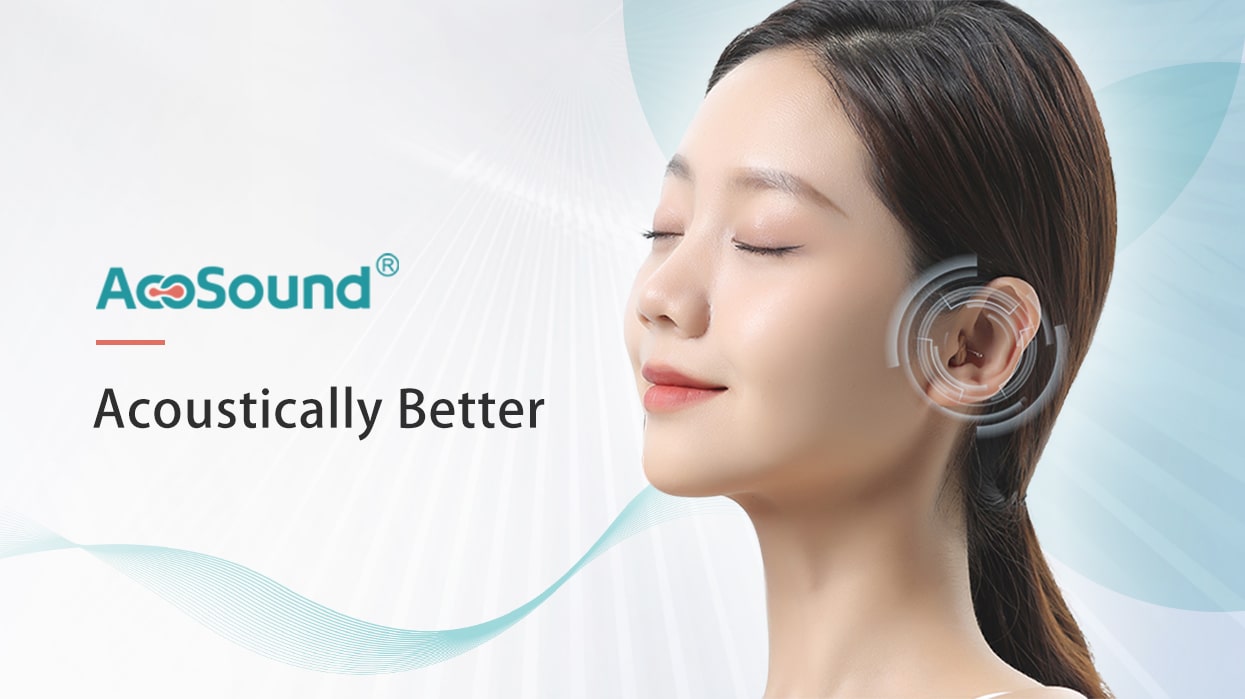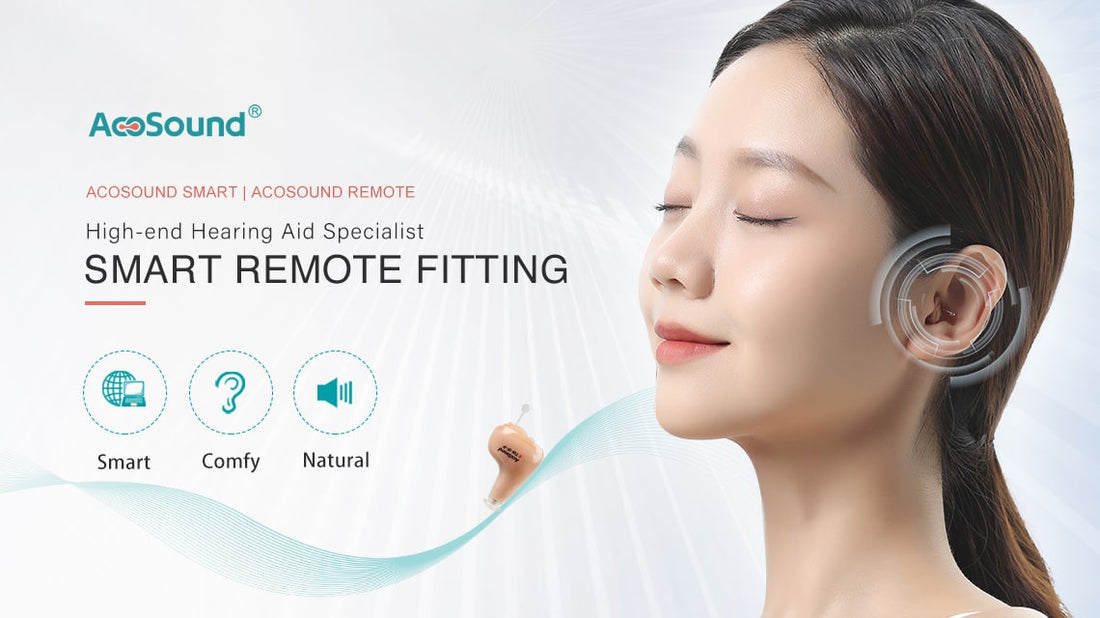Author: Dr. Rosette Ruth Reisman
Over the counter hearing aids are getting a lot of press currently. However, what’s being overlooked is the fact that hearing aids have been accessible direct-to-consumer for several years now. Consumers can go to any big box online platform like Amazon, Walmart, or Costco and purchase a set of hearing aids freely at many price points.The general public doesn't realize that there is a lot of research and development that goes into building a hearing aid that can mimic the complex hearing system. Hearing aids will never repair inherent nerve damage, therefore we are always working with an impaired system.
Getting the cleanest unadulterated signal to the brain through a damaged system, can be like driving a four-wheel sedan through mud. Granted, it’s possible the car will get from one side to the other, but wouldn’t it have been easier to get there with a vehicle that is actually designed to do that?
How Are Over-the-Counter Hearing Aids Different From Traditional Hearing Aids?
The category of OTC hearing aids puts the wearer completely in the driver’s seat. OTC hearing aids are sold directly to the consumer and can be purchased without a hearing exam. That means there won’t be any professional care or fitting, so you’ll be responsible for determining your hearing needs. The sale of OTC hearing aids is comparable to reading glasses that are purchased over the counter. These devices may work for individuals with mild or moderate hearing loss who require only a sound boost in certain settings.
To the layperson the hearing aid design, and the marketable features like Bluetooth connectivity, rechargeable batteries, and a remote phone application may all seem the same, so why pay more? However, if one of your top five hearing goals are actually improving hearing and communication, you may want to delve further into the advanced features. Obtaining the device that will provide the most customized, unadulterated signal to your ears that your wallet or your insurance will cover may be in your best interest.

Research has shown time and time again that the brain will adapt and rewire itself to the most consistent input it is being given. We want to activate those appropriate hearing structures that are designed to respond to specific speech stimuli. This will ensure that we are activating and strengthening those auditory pathways that will provide the best chance for success in maintaining a healthy functional central auditory system
AcoSound Hearing Aid Features
When we are evaluating a hearing aid, whether medical grade or over the counter, we want to look at the hearing aid features and evaluate if this is the correct device for you
| Hearing Aid feature | Benefits |
| Frequency response range | The larger the frequency range that the hearing aid can boost the clearer the speech signal provided. Speech is a complex signal that has at least three frequency response layers who’s energy spans a large range of pitches. This is one large differentiator between technology. The wider the frequency response the better the user will perform. If you look closely at the device specifications you can often see the frequency range for the device. |
| Advanced front end features | Since individuals with hearing loss have impaired neural responses, the hearing mechanism lacks response accuracy. This can be compared to vision loss – impaired vision sends a blurred image to the brain. Therefore hearing aids that have advanced features like adaptive directionally, noise reduction, feedback management, and speech enhancement will clarify the speech signal on the front end sending the most unadulterated signal to be processed by the brain. |
| Compression | Individuals with hearing loss have reduced dynamic ranges, which means the difference between when they first begin to hear sounds and where sounds begin to sound too loud is smaller than normal hearing individuals. Therefore, in order to input a wide range of signals with varied intensities the hearing aid needs to be able to compress the large range of inputs into a small dynamic range. Furthermore, it needs to be able to accurately represent soft, medium, and loud sounds. |
| Binaural integration | When wearing two hearing aids, it’s important that the hearing aids work together to improve speech understanding and localization. We have two ears for a reason, because we hear better with two ears especially in challenging environments. That’s why it’s important that the hearing devices work together to better restore normal hearing. |
| Binaural integration | When wearing two hearing aids, it’s important that the hearing aids work together to improve speech understanding and localization. We have two ears for a reason, because we hear better with two ears especially in challenging environments. That’s why it’s important that the hearing devices work together to better restore normal hearing. |
| Feedback and Occlusion Management |
Two of the common complaints experienced from hearing aids is feedback or whistling and occlusion which affects the perception of the patient’s own voice. Advanced hearing aids will have the mechanics to adjust for these concerns where it is unlikely that over the counter hearing aids will without significantly affecting the amplification. |
| Earpiece customization |
Almost all ear pieces will come with a selection of generic ear tips. Selecting the correct ear piece for the patient's hearing loss is crucial to their ability to hear and obtain benefit from hearing aids. More often than not patients are choosing an ear piece that is too small or open due to comfort. However, this will allow important sounds and hearing aid processing effects to be lost. Clinically, I have witnessed patients having amazing hearing that aren’t functioning successfully solely because of the ear piece selected. |
| Frequency Channels and Gain Handles |
This is the holy grail and the inherent differences amongst levels of technology. The higher the level of technology the more frequency channels and gain bands the hearing aid will have to customize to an individual’s hearing loss. This can be compared to pixels in an image… the more pixels an image has the clearer and brighter it is. This is true with hearing aids as well, the more channels and bands the device has the cleaner and clearer the speech signal being sent to the central auditory pathways. |
If you choose to go over the counter
If you feel over the counter hearing aids are best for you, maybe due to price and convenience, you should evaluate your options based on their features. One online device that is being marketed as over the counter is the AcoSound hearing aids. This is a self-fitting hearing device that comes in 3 different levels of technology and a variety of styles. An application is used to input your hearing results and program the hearing aids. The difference amongst the technology is the number of features which can be found in the AcoSound specification sheets on the website. Let’s compare them side by side.
| Hearing Aid Feature | AcoSound Basic | AcoSound Smart | AcoSound Remote | Notes |
| Frequency response range | 125 - 4000Hz | 125 - 4000Hz | 125 - 4000Hz | This will cover the majority of the audiogram but is limiting gain in the high pitches where some individuals need the most support. |
|
Advanced front end features |
Standard | Standard | Standard | It is unclear what standard means but the device appears to have features that can help manage noise within the device, which is helpful to the hearing impaired population |
| Compression | 8 Channel | 12 Channel | 16 Channel | One Of the differences in the levels of technology is the number of channels of compression. The more channels the bette the hearing aid can be customized for the patient. Although it is not clear what type of compression is being used which will make a difference in the distortion of the signal for the patient. It appears to have an adaptive technology that adjusts the compression according to the environment |
| Binaural integration | Unclear | Unclear | Unclear | Although the devices are sold in pairs it is unclear if they can communicate with one another from the website |
| Feedback and Occlusion Management | Occlusion and noise management | Occlusion and noise management | Occlusion and noise management | There is a feature in the device that can help manage the feeling of occlusion, or being closed off. There are mechanisms for noise management but nothing is indicated for feedback. It i sunclear hoe whistling will be managed in the device. |
| Earpiece customization | Selection of Sizes | Selection of Sizes | Selection of Sizes | There are a selection of earpieces for the in the ear and the receiver in the ear devices that the patient can choose from. The patient has to know which one will fit and work best for them. They may want to consider trying all sizes. It is unclear how the behind the ear device stays on. It may need an earmold that would need to be made by a hearing care professional. |
| Frequency Channels and Gain Handles | 12 Channel | 24 Channel | 48 Channel | It may be worth investing in the highest level of technology in this case to get more adjustable channels. This will ensure the device is customized to your hearing thresholds as much as possible. |
The AcoSound device does seem to have features that can benefit patients seeking an over the counter option. Having the application to help self-fit the hearing aid and touch base with technical support is also a plus. There is no mention however of rechargeable batteries or bluetooth options and therefore the cost of batteries and using the device for streaming needs to be taken into consideration.

PS: AcoSound launched rechargeable hearing aids with bluetooth options and streaming function in 2023.

